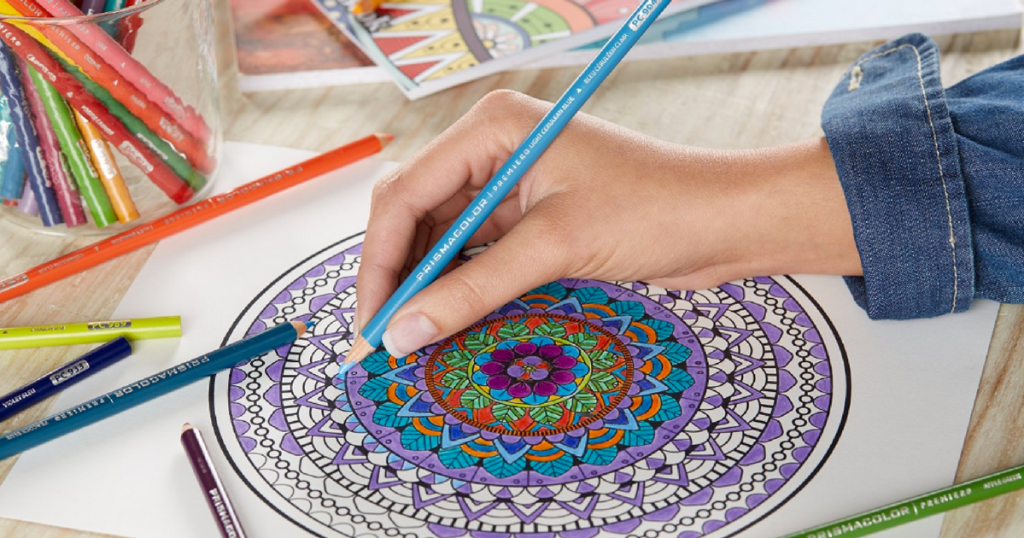This is part 2 of the series: Exploring The Profound Benefits Of Mandala Coloring Books
Coloring mandalas allows one to cultivate mindfulness, non-judgmental awareness, and focused attention to the present moment. This mindfulness practice has been scientifically proven to reduce stress, enhance well-being, and promote inner peace. When we engage in coloring mandalas, we can tap into these mindfulness benefits, allowing ourselves to experience a deeper level of relaxation and stress reduction.
The process of coloring mandalas requires us to be fully present and attentive to the task at hand. As we select colors, apply them to specific patterns, and follow intricate designs, our attention is naturally drawn to the present moment. We become immersed in the sensory experience of the colors, the paper’s texture, and our hands’ gentle movements. This focused engagement helps to anchor our awareness in the here and now, creating a temporary respite from the worries and distractions of daily life.

In a study conducted by Liu et al. (year), the effects of cooperative and individual mandala drawing on mindfulness, spirituality, and subjective well-being (SWB) were explored. The findings revealed that both collaborative mandala drawing (CMD) and individual mandala drawing (IMD) significantly enhanced mindfulness levels. Participants engaging in mandala drawing experienced reduced negative emotions and an increased spiritual connection. Notably, CMD demonstrated a more pronounced improvement in subjective well-being compared to IMD. These findings contribute to understanding how mandala drawing, particularly in a cooperative setting, can cultivate mindfulness and positively impact overall well-being (Liu et al., year).

Coloring mandalas can be likened to a form of active meditation. As we color, our breathing tends to become slower and deeper, which activates the parasympathetic nervous system and induces a state of relaxation. The repetitive and rhythmic motions of coloring promote a sense of flow, where we are fully absorbed in the process without being concerned with the outcome. This state of flow is deeply calming and can quiet the mind, allowing us to let go of stress and anxiety.
Coloring mandalas can be a powerful form of mindfulness practice, allowing us to fully immerse ourselves in the present moment, letting go of worries and distractions. The intricate patterns and repetitive motions invite us to focus our attention, cultivating a sense of calm and awareness.
Additionally, the symmetrical and geometric nature of mandalas can further enhance the mindfulness experience. The balanced patterns and intricate details provide a point of focus, grounding our attention and helping to still the fluctuations of the mind. As we color each section with intention and care, we develop a heightened sense of observation and a deeper connection to the present moment.

Through the practice of coloring mandalas mindfully, we can develop greater self-awareness and cultivate a sense of acceptance and non-judgment. We can observe our thoughts, emotions, and sensations as they arise without getting caught up in them or attaching labels of good or bad. This non-judgmental stance allows us to create a safe and compassionate space within ourselves where we can experience a release from stress and find inner peace.
By nurturing mindfulness through coloring mandalas, we can tap into mindfulness’s powerful stress-reducing and relaxation benefits. Coloring mandalas becomes a creative activity and a mindfulness practice that helps us connect with the present moment, let go of stress, and cultivate a deep sense of calm and well-being.
Reference:
Liu, C., Chen, H., Liu, C.-Y., Lin, R.-T., & Chiou, W.-K. (year). Cooperative and individual mandala drawing have different effects on mindfulness, spirituality, and subjective well-being. [Journal Name], Volume, Page numbers.






